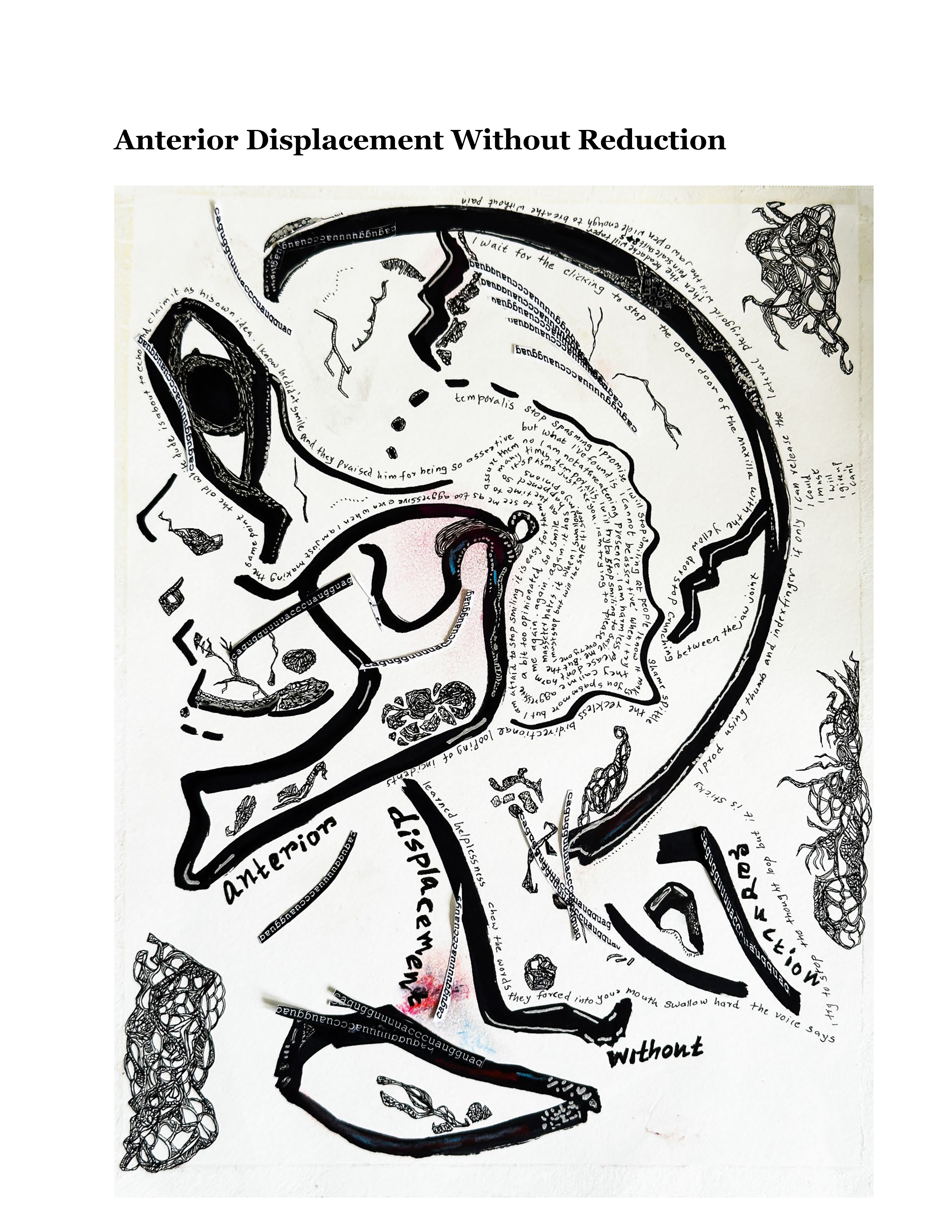1 poem & notes by Ashwini Bhasi
1 essay by Laura Passin,
on the work of Ashwini Bhasi
“Anterior Displacement Without Reduction”
“After great pain, a formal feeling comes,” Dickinson tells us, yes—but the formal feeling does not show us pain itself, as this harrowing visual poem tells us. During great pain, form becomes something else entirely—it warps, flexes, spirals in, folds time and space to fit inside that pain. In “Anterior Displacement Without Reduction,” the chronic pain of Temporomandibular Joint Disorder (TMD) creates a visual universe on the page, one that defies any attempts to read linearly.
Chronic pain is a physical reality with social consequences, and the nonlinearity of this poem captures this in its very making. The speaker begins by wishing for an end: “I wait for the clicking to stop.” As the poem continues, “stopping” becomes a social challenge as well as a bodily one, as the speaker bargains with her body: “I promise I will stop smiling at people I know it makes you spasm more but I am afraid to stop smiling.” The grinding of skull and jaw create an impossible bind: smile and deal yourself more pain / stop smiling and people will harm you “again. again. again.”
The author tells us in the process notes that the poem was created during a TMD flare-up itself, without mediation from “the analytical brain.” Follow the words, and you follow the pain: the reader is forced to twist, squint, and contort to absorb the details of the poem. I found my own analytical brain wondering, on first read, if I was doing it correctly—perhaps I had started at the wrong word, or followed the wrong curve—and then I realized that the logic of “right” and “wrong” are viscerally refuted by the form itself.
“I try to stop the thought loop but it is sticky” creeps up the back of the neck like a nerve misfiring. This poem is a documentary of an excruciating experience. It is also a generous offering: it invites you into an experience that is deeply interior, and it shows you a way to temporarily occupy that private reality. The more time I spend with this poem, the more vulnerable I feel as a reader; the askew eye reminds me of my own experience of chronic migraine, an illness I have tried and failed to represent with words many times. As this poem demonstrates beautifully, pain that distorts thinking cannot be represented through traditional poetic means.
The poem ends (or doesn’t end, or loops back in on itself) with another line that unfolds itself/folds space around itself, creating its own column emerging from the back of the skull: “I can / I could / I must / I will / I give up / I can’t.” In this segment, “can” and “can’t” refuse to be reconciled—these impulses both contradict and coexist. Is the speaker saying they will give up, or are they saying they can’t give up? Yes and yes. The poem is a displacement of pain, but it is not a reduction of it. It is sticky, this embodiment, and it is unstoppable.





